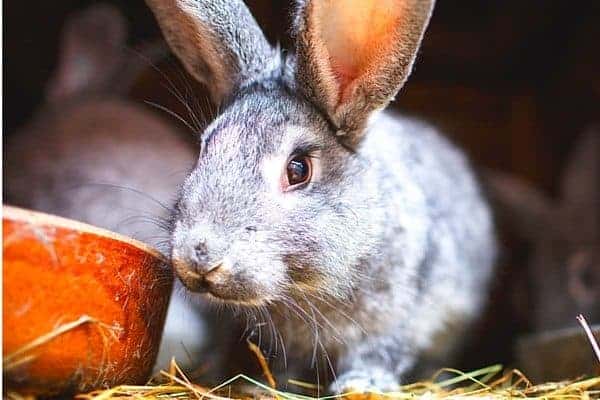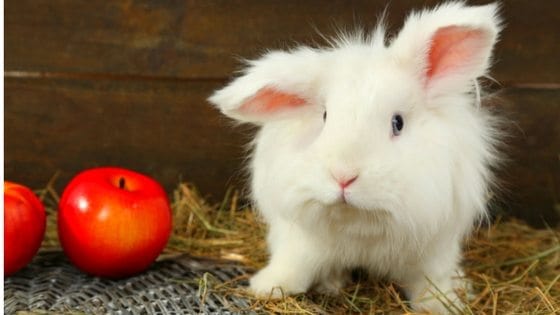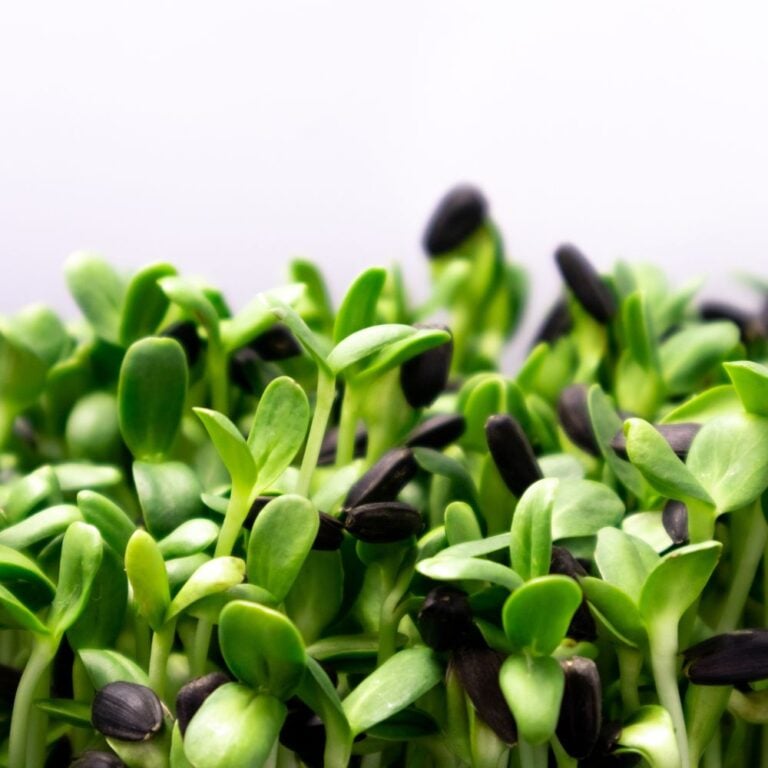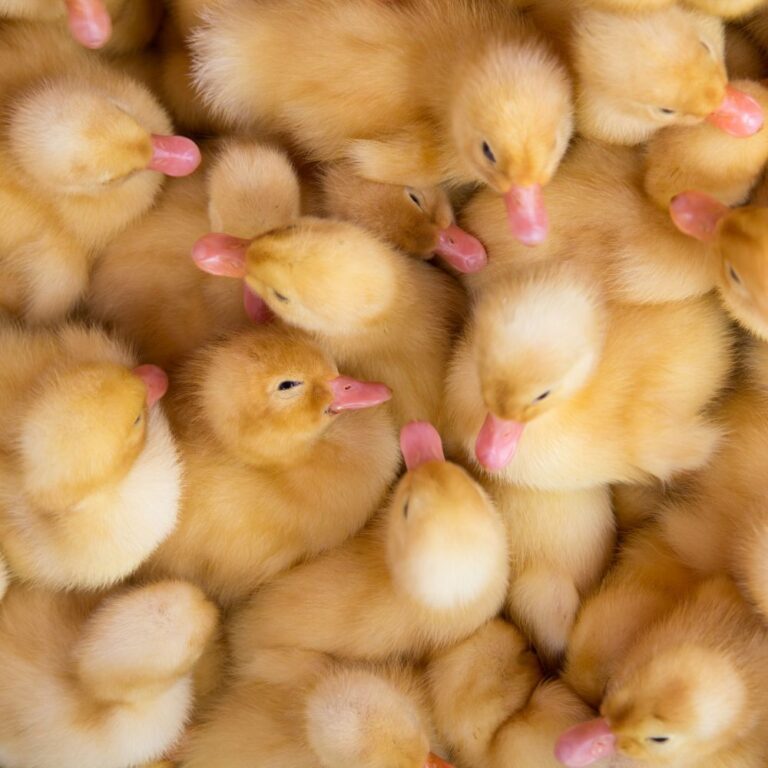Table of Contents (Quickly Jump To Information)
Raising rabbits on a homestead for their meat is not for everyone.
Realistically, rabbits are usually kept as pets, and it’s hard for some people who haven’t ever butchered rabbits to make that mental shift towards looking at rabbits as a food source.
But if you’re looking for a consistent, quick, easy source of lean meat, then raising rabbits are a good option for any homestead.
We keep several rabbits on our homestead of varying colors and sizes.
They’re easy to care for, have few needs beyond food, water, clean cages, and a little companionship. Rabbits are easy to breed and make hardly any noise, so they’re perfect for an urban homesteader.
A Note On Laws
Now, first a word about raising rabbits on your homestead. If you plan on raising rabbits on your homestead for their meat, first look at the laws in your state, county, and town.
In some areas of the United States, butchering rabbits for their meat can land you in hot water as our society moves ever further from sustainable farming.
In some of areas of the country, rabbits are considered pets and not livestock. Whether you don’t care or don’t agree with the laws, the bottom line is if they exist, you need to know.
Lack of understanding by neighbors might cause some unwanted legal drama, so first make sure your area doesn’t have any laws that can land you into trouble.
We’ve all seen social media spin out of control when a human violates local laws regarding pets, and you don’t want to be on the receiving end of that particular hammer.
Florida, for example, has laws that protect home butchering. However, I’ve seen many people get in trouble for homesteading when a nosy neighbor decides the animals “aren’t being cared for properly” (read: They object to butchering because they don’t realize that’s how meat is produced).
While the homestead owner was right under the eyes of the law, they still had to pay for an attorney and replace their stock after animal control seized their livestock.
In Missouri, on the other hand, owners are permitted by law to butcher any animal they own regardless of method. It varies by state. So know your local laws to avoid problems.
(As an aside, I’m not an attorney, just a keen observer. Consult an actual attorney about the laws in your area if you start raising rabbits for meat.)
Selecting Rabbits
The first decision you’ll have to make when raising rabbits on your homestead is which breeds you want.
We raise mostly mixed breed rabbits with Rex, Chinchilla, Wild Rabbit,and New Zealand bloodlines.
New Zealand and Rex rabbits are probably the most popular rabbits for raising on a homestead because of their size and easy going natures.
In our area, people like to eat wild rabbits in addition to more domesticated breeds so we keep a wild-bred rabbit (one that was from a wild rabbit that was tamed).
When you look for rabbits for raising on your homestead, look for healthy animals that are in good flesh and don’t appear ill. You’re best off getting your breeding stock from a reputable dealer who cares about the quality of the animal.
If you don’t have much money to spend, then you can still easily acquire rabbits for raising. Four of our rabbits were given to us by someone who just didn’t want them anymore (raising rabbits for meat wasn’t for them).
If you feel prepared to give a home to a free rabbit and it appears healthy and able to breed then free is a good way to go. You will still have to feed it regularly, so make sure you’re able to bear that financial responsibility before acquiring free rabbits, however.
In this case, patience and time yield favorable results.
If you don’t want to wait, however, you can acquire rabbits for as little as $10 with the average price being between $15 and $20. For pedigreed Chinchilla male rabbits, we paid $12 each.
Feeding Rabbits You’re Raising
Rabbits require little specialized feeding and a regular ration that you purchase at a feed store will work well.
I recommend purchasing 40 lb or 50 lb bags of feed at a feed store. In our area, we can get a 50 lb bag of feed for $10, while at a big box store, they sell 5 or 10 lb bags for the same amount.
We offer our rabbits plenty of fresh vegetables too, and they especially love lettuce, cabbage, carrots, and tomatoes.
We also provide fresh water in large waterers that you can buy at any pet store or big box store.
Housing for Your Rabbits
We keep our rabbits in large cages that we have permanently placed in a greenhouse. The rabbits are able to be outside in the fresh air, but still be out of inclement weather.
Anything is appropriate housing for raising rabbits on a homestead as long as the rabbit has enough room, is out of the elements, has food and water.
Cages must be cleaned regularly.
We use hay and straw as bedding, which the rabbits love because they can nibble on it.
Raising Sustainable Meat With Rabbits
Of course, if your goal is raising rabbits for meat, at some point you will have to breed them.
While we won’t get into breeding too much in this article, large rabbits reach maturity at about 7 months of age.
Female rabbits have a 30 day gestation cycle, and can have litters of 1-10 kits (baby rabbits are called kits) and the average litter size is 6.
Rabbits breed by induced ovulation, meaning when the female is bred, she is then induced to ovulate.
The advantage to this is you don’t need to worry about heat cycles and making sure you mate her at just the right time, like you do with other mammals.
I recommend breeding rabbits with caution because it is easy to become overwhelmed quickly. We try to breed only 1 rabbit every month or two.
We’re raising 8 rabbits as our breeding stock, so unless we keep a strict schedule, we can easily become overrun with rabbits.
Raising rabbits on your homestead as a sustainable source of meat is easy, as long as you keep some of the ideas in this article in mind.
I’d like to hear from you!
Are you thinking of raising rabbits on your homestead? Email me or comment below!
Maat van Uitert is a backyard chicken and sustainable living expert. She is also the author of Chickens: Naturally Raising A Sustainable Flock, which was a best seller in it’s Amazon category. Maat has been featured on NBC, CBS, AOL Finance, Community Chickens, the Huffington Post, Chickens magazine, Backyard Poultry, and Countryside Magazine. She lives on her farm in Southeast Missouri with her husband, two children, and about a million chickens and ducks. You can follow Maat on Facebook here and Instagram here.








Trying to raise our rabbits for meat looking to find out a little more about it. We did get two kits last year. They are already acting like there ready to breed. Did have some concerns about brother and sister mating before I got the brother out of the pen with his sister I think he got to her. Any info will be helpful thanks
Hi Sabrina, rabbits are ready to breed at about 6-7 months old, depending on the rabbit and the breed. Some are ready earlier or later, but that’s the approximate age. If the brother did get to the sister, then there’s not much you can do, just make sure they’re separated in the future. Does ovulate when they mate, so it’s possible she is pregnant (likely, if both are mature). Do you know when they might have mated? If so, her gestation is 31-32 days after that date. You’ll want to give her a nesting box on day 27 in case she births early, and give her plenty of hay to make a nest. If you have more questions, just let me know. Good luck.